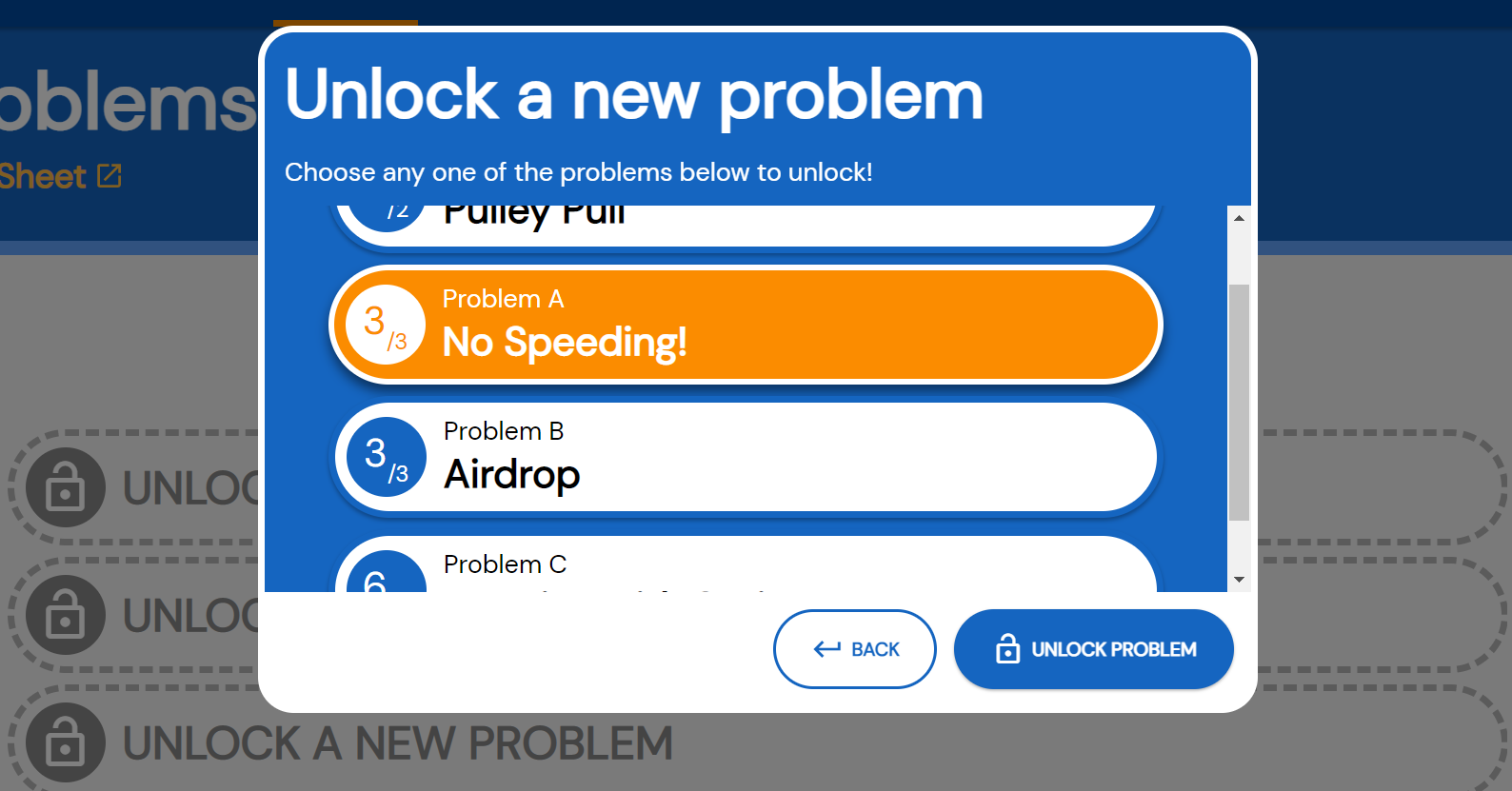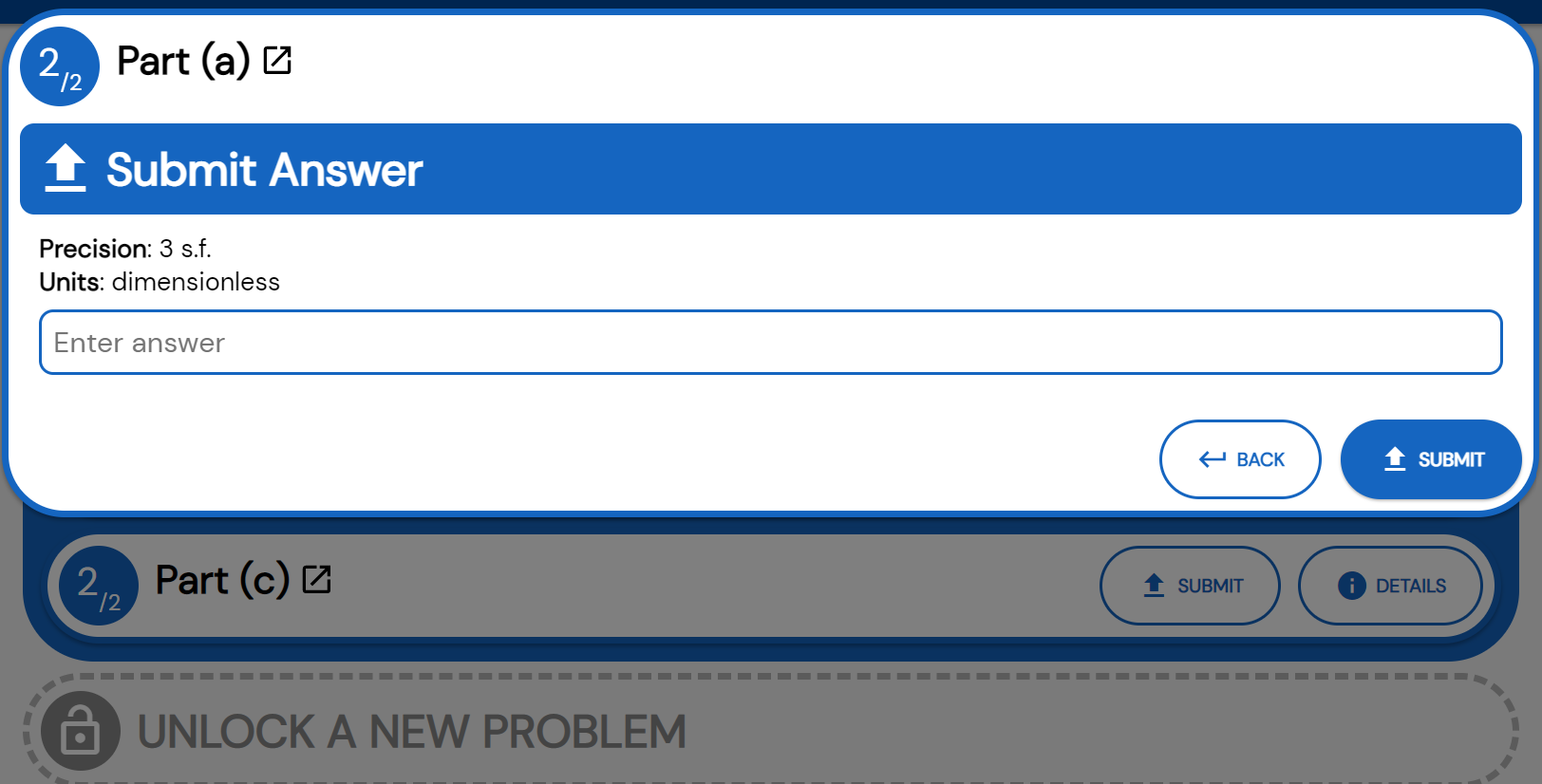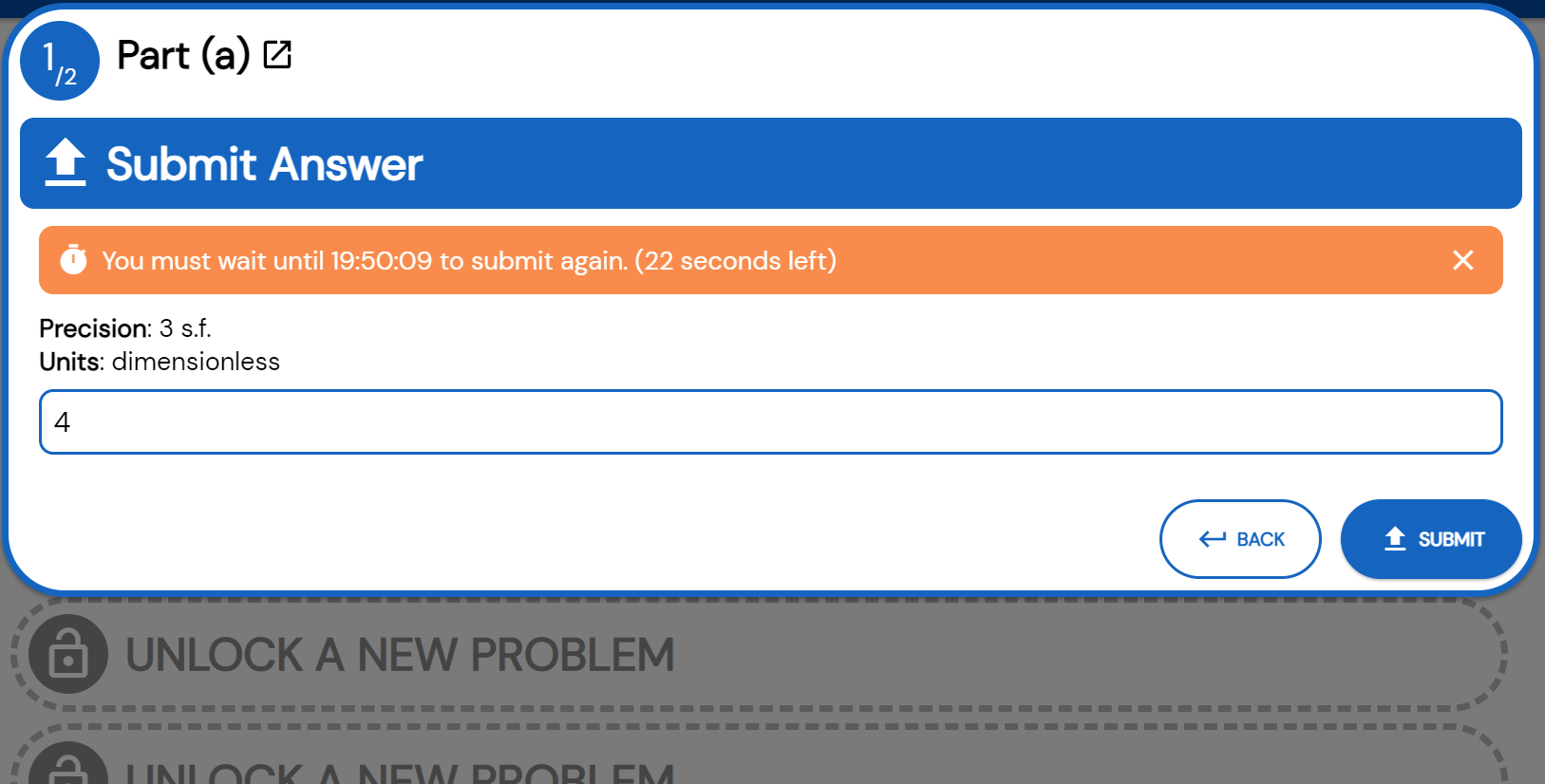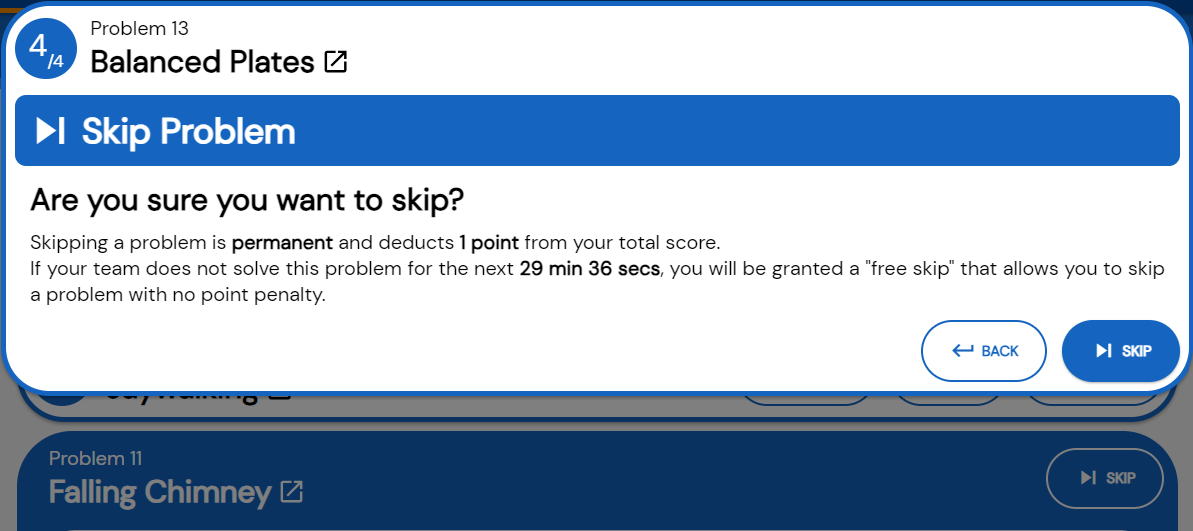find_in_page
Overview
SPhL 2025 will be held online on Saturday, 5 July 2025,
for a duration of 4 hours, from 2:00 PM to 6:00 PM (Singapore Time, GMT+8).
All participants must be current students in Singapore secondary schools or pre-university institutions (Junior College, Millennia Institute, Polytechnic, ITE, or equivalent)
You must form teams of 3, 4 or 5 members, under one of these two categories:
Teams will be ranked based on the points scored by correctly solving problems. Rankings and awards will be determined separately for each category.
[NEW!] Selected teams from the Senior Category will be invited to a physical event: SPhL 2025 Grand Finals, on the afternoon of 19 July 2025 (Saturday), at the Singapore University of Technology and Design. Teams will also be given awards for their performance in the SPhL Grand Finals. However, the Grand Finals will not affect the awards for the main online competition - it's just an extra opportunity for fun and learning!
Your team will share one account on our competition platform, which may be accessed on all of your teammates' devices simultaneously. Every action you make there will be performed collectively for the whole team. Be sure to share the account details with your teammates, and everyone must keep it secure!
All participants must be current students in Singapore secondary schools or pre-university institutions (Junior College, Millennia Institute, Polytechnic, ITE, or equivalent)
You must form teams of 3, 4 or 5 members, under one of these two categories:
- SPhL (Junior): All members are studying in secondary school (or equivalent)
- SPhL (Senior): All members are studying in junior college (or equivalent)
Teams will be ranked based on the points scored by correctly solving problems. Rankings and awards will be determined separately for each category.
[NEW!] Selected teams from the Senior Category will be invited to a physical event: SPhL 2025 Grand Finals, on the afternoon of 19 July 2025 (Saturday), at the Singapore University of Technology and Design. Teams will also be given awards for their performance in the SPhL Grand Finals. However, the Grand Finals will not affect the awards for the main online competition - it's just an extra opportunity for fun and learning!
Your team will share one account on our competition platform, which may be accessed on all of your teammates' devices simultaneously. Every action you make there will be performed collectively for the whole team. Be sure to share the account details with your teammates, and everyone must keep it secure!
Note on the competition platform
The competition platform uses Websockets to ensure that any actions by your team will
display timely on all team members' clients. There is thus no need to constantly refresh the page.
If you encounter issues with this system, you may disable Websockets in the settings
(note that you may then have to manually refresh the page to ensure that any changes are updated).
rule
Do's and Don'ts
During the competition, you are allowed - in fact,
strongly encouraged - to communicate with your
teammates!
This can be in any manner you deem fit, be it
virtually or in person from any
location of your choice.
You can use any resources that you are legally
permitted to access, without any restrictions.
This includes non-exhaustively: your own notes, textbooks,
online resources (e.g. courses, videos, simulations),
computational software (e.g. Desmos, Wolfram Alpha, Mathematica),
or computer programming languages (e.g. Python, C++, MATLAB).
However, you cannot communicate with
anyone outside of your team
regarding the SPhL problems during the competition.
Any discussion of problems must be confined within
your team. (But once the competition ends, this
restriction no longer applies!)
Please note that this extends to the use of online
information-sharing sites that can be accessed by
other teams (such as a public Pastebin link), even if
you did not intend for it to be viewed by other teams.
You are strictly prohibited from any unsporting
or unethical actions that unfairly advantages or
disadvantages yourselves or other teams,
including any intentional or unintentional attacks on SPhL's web infrastructure.
[NEW!]
You are strictly prohibited from using any Generative Artificial Intelligence tools.
This includes but is not limited to tools such as ChatGPT, GPT-4o,
Deepseek, Copilot, Gemini, Meta Llama LLMs, etc., regardless of whether they are
cloud-based, self-hosted, or on-device.
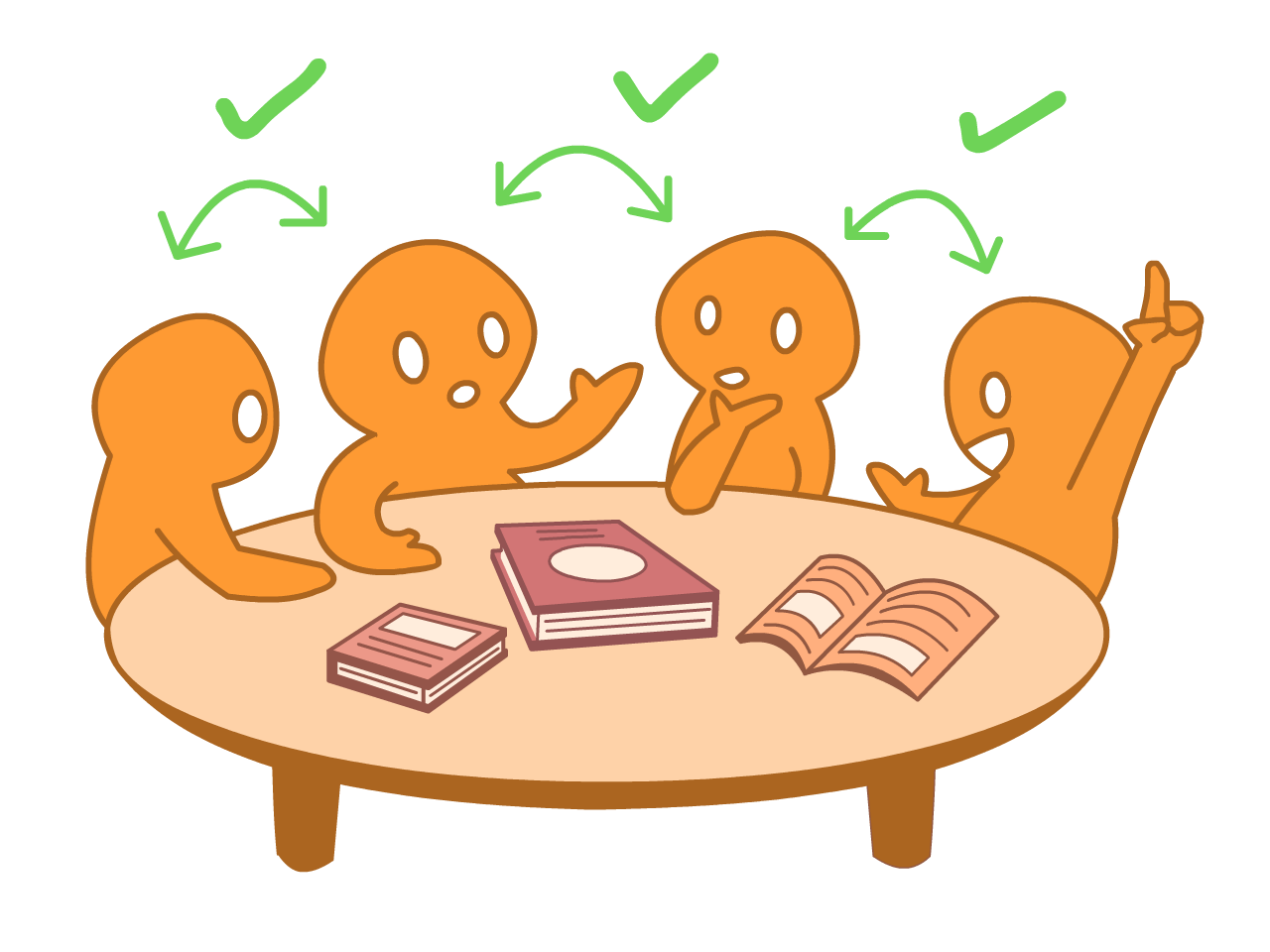
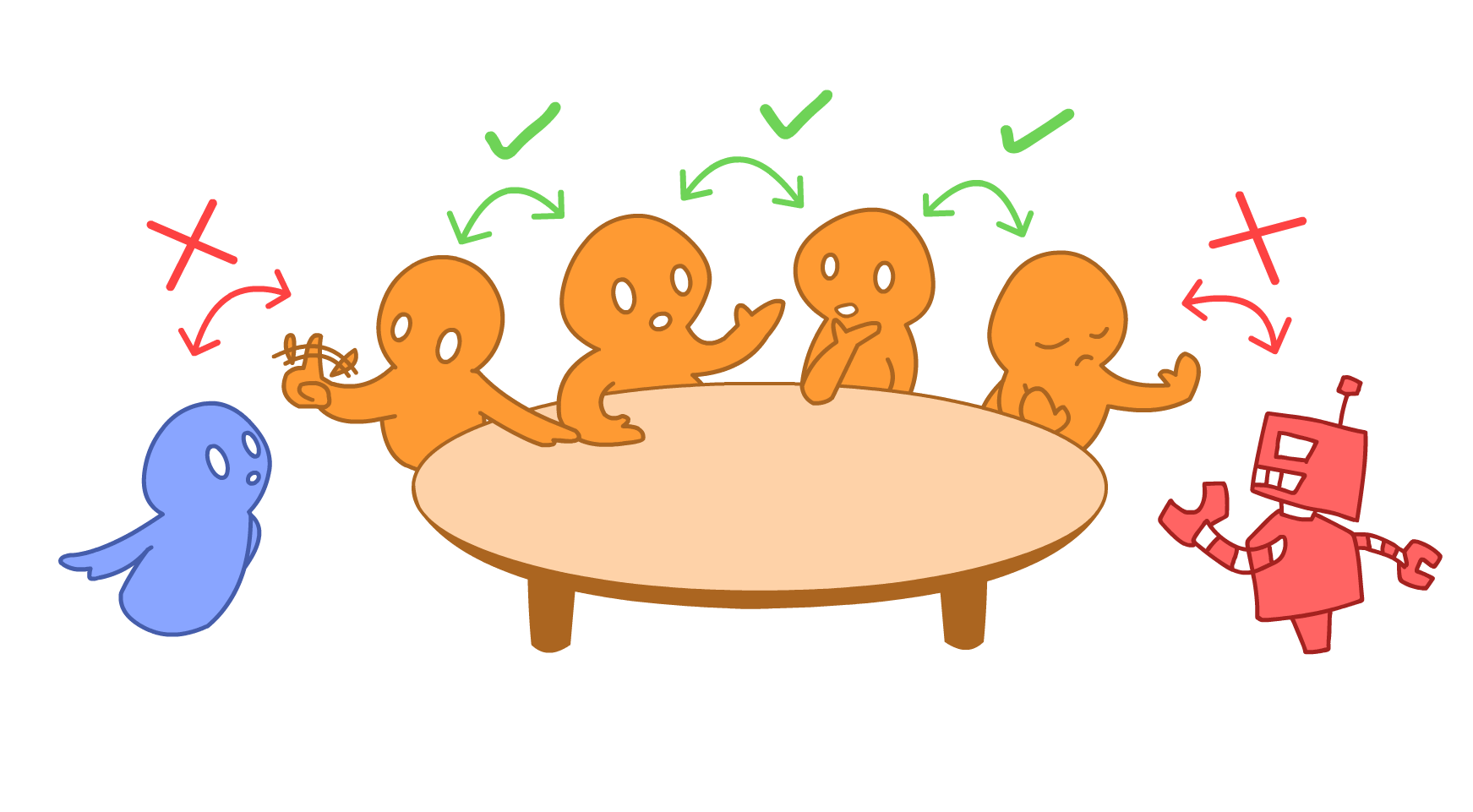
quiz
Problems
Problems will vary in difficulty level, but are
generally arranged in order of increasing difficulty
(though this is, of course, somewhat subjective).
The examinable syllabus will follow that of the
International Physics Olympiad (IPhO). For a sense of possible question styles,
view past years’ SPhL problems here.
Teams in both categories will mostly attempt the same problems - with the exception of a number of “Junior Problems” that are only released to the SPhL (Junior) teams.
Answers to all problems (except multiple-choice problems) will be numerical, and should be given in the units specified in the problem. The degree of precision of your answers should follow, at minimum, the number of significant figures stated in the problem.
If the problem statement specifies the numerical value of a constant, use that value in your calculations. Otherwise, use their standard values, e.g. g = 9.81 m s-2. You may refer to this data sheet for the standard values of common constants.
Whenever you have fewer than 4 problems to work on, you can unlock (i.e. gain access to) a new one. This happens whenever you solve or skip a problem, or at the very start of the competition (when you have yet to unlock any problems).
You will be given a limited choice on which new problem(s) to unlock. You will be shown only the titles and allocated points of the next 4 problems that you have not yet unlocked - all other details, such as the problem statement, will not be revealed. Based on this little preview, you are to then decide which one of those 4 problems to unlock.
done If your answer is correct:
The degree of precision of your queries should follow the requirements stated in the problem (i.e. the number of significant figures, decimal places, integers etc.).
There is also a limit on the number of queries you can make per problem attempt. Some problems are more lenient and allow many queries, while others may only permit one. As such, it is important to think carefully, plan your strategy, and use as few queries as possible to reach the solution efficiently.
Once a problem is skipped, 1 point is deducted from your total score, and the skipped problem can no longer be attempted.
The system will also automatically grant “free skips” for problems that your team has not solved for 15 minutes. These “free skips” can be used to permanently skip these problems, which will be removed from your unlocked problems without any point penalty.
Teams in both categories will mostly attempt the same problems - with the exception of a number of “Junior Problems” that are only released to the SPhL (Junior) teams.
Answers to all problems (except multiple-choice problems) will be numerical, and should be given in the units specified in the problem. The degree of precision of your answers should follow, at minimum, the number of significant figures stated in the problem.
If the problem statement specifies the numerical value of a constant, use that value in your calculations. Otherwise, use their standard values, e.g. g = 9.81 m s-2. You may refer to this data sheet for the standard values of common constants.
lock_openUnlocking Problems
At any time during the competition, your team
can concurrently access up to 4 problems to work
on.
Whenever you have fewer than 4 problems to work on, you can unlock (i.e. gain access to) a new one. This happens whenever you solve or skip a problem, or at the very start of the competition (when you have yet to unlock any problems).
You will be given a limited choice on which new problem(s) to unlock. You will be shown only the titles and allocated points of the next 4 problems that you have not yet unlocked - all other details, such as the problem statement, will not be revealed. Based on this little preview, you are to then decide which one of those 4 problems to unlock.
For illustration: Example scenario
of unlocking problems
To help you better understand the
problem unlocking system, let us consider
a mock competition with problems
numbered 1 to 10. A possible sequence of
actions could then look like this:
At the start of the competition,
you do not have access to any
problem. You will be able to
unlock a new problem up to 4
times in succession.
Problems not yet unlocked: 1, 2,
3, 4, 5, 6, 7, 8, 9, 10
You can pick one of problems
1, 2, 3, 4 to unlock. You
select problem 1.
Problems not yet unlocked:
1, 2, 3, 4, 5,
6, 7, 8, 9, 10
Now, you have access to problem
1, which you can start working
on. At the same time, you can
still unlock a new problem 3
times.
You can pick one of problems 2, 3, 4, 5 to unlock. You select problem 3.
You can pick one of problems 2, 3, 4, 5 to unlock. You select problem 3.
Problems not yet unlocked:
1, 2,
3, 4, 5, 6, 7,
8, 9, 10
Now, you have access to problems
1, 3. You can still unlock a new
problem 2 times.
You can pick one of problems 2, 4, 5, 6 to unlock. You select problem 6.
You can pick one of problems 2, 4, 5, 6 to unlock. You select problem 6.
Problems not yet unlocked:
1, 2,
3, 4, 5,
6, 7, 8, 9, 10
Now, you have access to problems
1, 3, 6. You can still unlock 1
new problem.
You can pick one of problems 2, 4, 5, 7 to unlock. You select problem 4.
You can pick one of problems 2, 4, 5, 7 to unlock. You select problem 4.
Problems not yet unlocked:
1, 2,
3,
4, 5,
6, 7, 8, 9, 10
Now, you have access to problems
1, 3, 4, 6. With access to 4
problems, you are no longer
eligible to unlock a new
problem… until you solve or skip
one of your unlocked problems.
Let's say, you submit a correct answer to problem 3.
You already had access to problems 1, 4, 6. You can now unlock 1 new problem.
You can pick one of problems 2, 5, 7, 8 to unlock. You select problem 7.
Let's say, you submit a correct answer to problem 3.
You already had access to problems 1, 4, 6. You can now unlock 1 new problem.
You can pick one of problems 2, 5, 7, 8 to unlock. You select problem 7.
Problems not yet unlocked:
1, 2,
3,
4, 5,
6,
7, 8, 9, 10
Now, you have access to problems
1, 4, 6, 7. With access to 4
problems, you cannot unlock a
new problem, until your next
solve or skip.
You will then be allowed to unlock one of problems 2, 5, 8, 9.
… and so on!
You will then be allowed to unlock one of problems 2, 5, 8, 9.
… and so on!
uploadSubmitting Answers
Once you submit an answer to a problem, the
platform instantaneously processes it and
informs you whether it is correct or wrong.
done If your answer is correct:
- You will be able to unlock a new problem.
- You will also be awarded points (see below).
- You will not be able to unlock a new problem.
- Instead, you may re-attempt the problem, as many times as you wish. However, the points awarded for the correct answer decreases with the number of attempts taken (see example below).
- To discourage random guessing, you can only re-submit an answer to the same problem after 30 seconds.
For illustration: Table of points
awarded
To help you better understand how many
points are awarded under different
scenarios, here is a table to clear
things up:
Points awarded for a
correct answer
gamepadInteractive Problems
In interactive problems, you are given access to
a simulation of a particular physics scenario
(e.g. a falling ball), and you must solve the
problem through inputting simulation queries and
interpreting the simulation outputs.
The degree of precision of your queries should follow the requirements stated in the problem (i.e. the number of significant figures, decimal places, integers etc.).
There is also a limit on the number of queries you can make per problem attempt. Some problems are more lenient and allow many queries, while others may only permit one. As such, it is important to think carefully, plan your strategy, and use as few queries as possible to reach the solution efficiently.
For illustration: Example interactive problem
For example, if a problem allows up to N simulation queries
per problem attempt, it means you can collect up to N new
data points for each additional problem attempt.
Let's see what happens if the interactive problem
has a starting score of 4 points with 3 simulation queries per attempt.
In your first attempt, you have up to 3 simulation queries.
For each simulation query, you will input certain experiment parameters (e.g. length of a string, a set of coordinates, etc.) and receive one corresponding output. Keep in mind that the output is not always numerical. Sometimes, it can be simple words (e.g. “left” or “right”).
You choose to make use of all 3 simulation queries.
Great! Now you have collected 3 data points.
Since you have reached the maximum number of allowed queries for this attempt, the simulation will be disabled. You must now try to solve the problem using only the information you've gathered so far.
Just like in a real experiment, the simulation process is irreversible. Once a query is made, you cannot undo or repeat it. So be sure to choose your query values wisely!
First attempt is correct: Congratulations, you have earned the maximum number of points!
First attempt is incorrect: Womp Womp… but fret not! You now get another chance with 3 new simulation queries. Combined with the 3 data points from your first attempt, you now have a total of 6 data points to work with. This means you now have much more information at your disposal to solve the problem.
For the particular example above, here's how everything continues beyond the first attempt.
In your first attempt, you have up to 3 simulation queries.
For each simulation query, you will input certain experiment parameters (e.g. length of a string, a set of coordinates, etc.) and receive one corresponding output. Keep in mind that the output is not always numerical. Sometimes, it can be simple words (e.g. “left” or “right”).
You choose to make use of all 3 simulation queries.
| Queries | Outputs |
|---|---|
| Query 1: 1.02 | Output 1: 2.04 |
| Query 2: 2.34 | Output 2: 4.79 |
| Query 3: 5.45 | Output 3: 10.4 |
Great! Now you have collected 3 data points.
Since you have reached the maximum number of allowed queries for this attempt, the simulation will be disabled. You must now try to solve the problem using only the information you've gathered so far.
Just like in a real experiment, the simulation process is irreversible. Once a query is made, you cannot undo or repeat it. So be sure to choose your query values wisely!
First attempt is correct: Congratulations, you have earned the maximum number of points!
First attempt is incorrect: Womp Womp… but fret not! You now get another chance with 3 new simulation queries. Combined with the 3 data points from your first attempt, you now have a total of 6 data points to work with. This means you now have much more information at your disposal to solve the problem.
For the particular example above, here's how everything continues beyond the first attempt.
| Number of incorrect submissions prior to correct submission | Cumulative number of simulation queries allowed | Points allocation for the problem |
|---|---|---|
| 0 | 3 | 4 |
| 1 | 2 x 3 = 6 | 3 |
| 2 | 3 x 3 = 9 | 2 |
| 3 | 4 x 3 = 12 | 1 |
| 4 | 5 x 3 = 15 | 1 |
| 5 | 6 x 3 = 18 | 1 |
skip_nextSkipping Problems
You may also skip a problem in order to unlock a
new one. This may be useful if you have been stuck
on a problem for a long time.
Once a problem is skipped, 1 point is deducted from your total score, and the skipped problem can no longer be attempted.
The system will also automatically grant “free skips” for problems that your team has not solved for 15 minutes. These “free skips” can be used to permanently skip these problems, which will be removed from your unlocked problems without any point penalty.
Multi-part problems
A multi-part problem comprises a number of
distinct smaller parts labelled (a), (b), …
etc. Each part asks a different question,
carries a different number of points, and
(usually) has a different answer.
When you unlock a multi-part problem, you simultaneously unlock all of its constituent parts. The preview of unlockable problems (that displays while unlocking a new problem) will not indicate whether a problem is multi-part, and the point allocation displayed there for a multi-part problem would be the total points of all parts combined.
You submit answers to each part independently, and in any sequence you want. Likewise, points are awarded separately for each part. A new problem is only unlocked once all parts of the multi-part problem have been solved.
If you choose to skip a multi-part problem, you will skip all of its remaining unsolved parts. A “free skip” will be awarded if your team has not submitted a correct answer to any part in 30 minutes. Unless a “free skip” is used, the 1-point penalty applies, but it is only imposed once for the whole problem, regardless of the number of unsolved parts skipped. Hence, you may, for instance, gain points for some of the parts and then skip the remaining parts for a combined penalty of 1 point.
When you unlock a multi-part problem, you simultaneously unlock all of its constituent parts. The preview of unlockable problems (that displays while unlocking a new problem) will not indicate whether a problem is multi-part, and the point allocation displayed there for a multi-part problem would be the total points of all parts combined.
You submit answers to each part independently, and in any sequence you want. Likewise, points are awarded separately for each part. A new problem is only unlocked once all parts of the multi-part problem have been solved.
If you choose to skip a multi-part problem, you will skip all of its remaining unsolved parts. A “free skip” will be awarded if your team has not submitted a correct answer to any part in 30 minutes. Unless a “free skip” is used, the 1-point penalty applies, but it is only imposed once for the whole problem, regardless of the number of unsolved parts skipped. Hence, you may, for instance, gain points for some of the parts and then skip the remaining parts for a combined penalty of 1 point.
Multiple-choice problems
Instead of an open-ended numerical answer,
multiple-choice problems simply require you
to choose from a few specified options
labelled Option 1, Option 2 … etc.
Unlocking, submitting, and skipping rules for multiple-choice problems are no different from any other problem.
The only difference is with the awarding of points. With enough incorrect attempts, you may score a minimum of 0 points for the correct answer to multiple-choice problems, as opposed to the minimum of 1 point for all other problems.
Unlocking, submitting, and skipping rules for multiple-choice problems are no different from any other problem.
The only difference is with the awarding of points. With enough incorrect attempts, you may score a minimum of 0 points for the correct answer to multiple-choice problems, as opposed to the minimum of 1 point for all other problems.
hourglass_top
Half Hour Rush
Half Hour Rush (HHR) is a 30-minute period
that commences at 3:30 PM, i.e. 1.5 hours after
the start of the competition, and ends at 4:00
PM.
During HHR, we introduce 3 sets of fresh “HHR problems” into the competition: Mechanics (M), Electromagnetism (E), and Others (X). Each set contains 4 HHR problems arranged in increasing order of difficulty, and labelled based on their set (M/E/X). For instance, problem 1 in the Mechanics set is “M1”, problem 4 in the Electromagnetism set is “E4”, etc.
Once HHR begins, all teams will automatically gain concurrent access to the first problem from each set: M1, E1 and X1. When you solve or skip a HHR problem, you automatically gain access to the next one from the same set.
Solving HHR problems in “triplets” during the HHR period doubles the points awarded for that triplet. For instance, if you correctly solve M1, E1, and X1 before solving M2, E2 or X2, the points awarded for M1, E1 and X1 will be doubled.
During HHR, you can continue to solve the 4 regular problems. After HHR, you can continue to solve any HHR problems you have yet to solve and unlock new HHR problems, and these do not count towards the 4 regular problems you can access. However, we strongly advise your team to focus on HHR problems during HHR, to grab as many points as possible!
During HHR, we introduce 3 sets of fresh “HHR problems” into the competition: Mechanics (M), Electromagnetism (E), and Others (X). Each set contains 4 HHR problems arranged in increasing order of difficulty, and labelled based on their set (M/E/X). For instance, problem 1 in the Mechanics set is “M1”, problem 4 in the Electromagnetism set is “E4”, etc.
Once HHR begins, all teams will automatically gain concurrent access to the first problem from each set: M1, E1 and X1. When you solve or skip a HHR problem, you automatically gain access to the next one from the same set.
Solving HHR problems in “triplets” during the HHR period doubles the points awarded for that triplet. For instance, if you correctly solve M1, E1, and X1 before solving M2, E2 or X2, the points awarded for M1, E1 and X1 will be doubled.
For illustration: Example scenarios
of triplets and non-triplets
Suppose that during the
Half Hour Rush, your team solves
HHR problems in the following
chronological sequence (from left to
right) with the following scores:
Points directly scored from solving HHR problems = 3 + 3 + 2 + 4 + 3 + 1 + 4 + 2 + 4 = 26.
Additionally, two triplets were formed: {E1, M1, X1} and {M2, X2, E2}. Bonus points awarded for reaping triplets = (3 + 3 + 2) + (4 + 3 + 1) = 16.
Hence, your team would score a total of 26 + 16 = 42 points during HHR.
On the other hand, consider another team that solves in this sequence (noting that the points scored for each question can differ due to the effect of re-attempts):
Points directly scored from solving HHR problems = 3 + 3 + 3 + 3 + 4 + 4 + 4 + 5 + 5 = 34.
However, no triplets were formed, so no bonus points would be awarded. Hence, despite this team scoring more raw points from solving the problems than your team (34 instead of 26), your team gained more points in total because of the bonus from triplets.
This other team could have coordinated better by simply swapping the order in which they submitted answers for X2 and M1, as well as for E3 and M2. This would have given them 3 triplets with 34 bonus points, doubling the total points they scored from HHR to 34 + 34 = 68 points.
| Problem | E1 | M1 | X1 | M2 | X2 | E2 | M3 | E3 | M4 |
|---|---|---|---|---|---|---|---|---|---|
| Score | 3 | 3 | 2 | 4 | 3 | 1 | 4 | 2 | 4 |
Points directly scored from solving HHR problems = 3 + 3 + 2 + 4 + 3 + 1 + 4 + 2 + 4 = 26.
Additionally, two triplets were formed: {E1, M1, X1} and {M2, X2, E2}. Bonus points awarded for reaping triplets = (3 + 3 + 2) + (4 + 3 + 1) = 16.
Hence, your team would score a total of 26 + 16 = 42 points during HHR.
On the other hand, consider another team that solves in this sequence (noting that the points scored for each question can differ due to the effect of re-attempts):
| Problem | X1 | E1 | X2 | M1 | E2 | E3 | M2 | X3 | M3 |
|---|---|---|---|---|---|---|---|---|---|
| Score | 3 | 3 | 3 | 3 | 4 | 4 | 4 | 5 | 5 |
Points directly scored from solving HHR problems = 3 + 3 + 3 + 3 + 4 + 4 + 4 + 5 + 5 = 34.
However, no triplets were formed, so no bonus points would be awarded. Hence, despite this team scoring more raw points from solving the problems than your team (34 instead of 26), your team gained more points in total because of the bonus from triplets.
This other team could have coordinated better by simply swapping the order in which they submitted answers for X2 and M1, as well as for E3 and M2. This would have given them 3 triplets with 34 bonus points, doubling the total points they scored from HHR to 34 + 34 = 68 points.
During HHR, you can continue to solve the 4 regular problems. After HHR, you can continue to solve any HHR problems you have yet to solve and unlock new HHR problems, and these do not count towards the 4 regular problems you can access. However, we strongly advise your team to focus on HHR problems during HHR, to grab as many points as possible!
textsms
Final Remarks
By registering for SPhL, you agree to comply with
all of the aforementioned rules.
Leaderboards will only reflect team names, school(s) and not the individual names or emails. Personal data will not be publicly displayed on the website without prior consent.
Should you be judged to have breached any of the rules or our terms and conditions, we reserve the right to impose penalties, including but not limited to disqualification of your entire team.
After the competition, you may submit appeals on the grounds of any issues with the problems or solutions, or objections to penalties imposed by the organisers. If an appeal is accepted, we will update all scores and rankings accordingly.
All scores will be final and no further appeals will be entertained once the competition results are declared to be finalised.
Leaderboards will only reflect team names, school(s) and not the individual names or emails. Personal data will not be publicly displayed on the website without prior consent.
Should you be judged to have breached any of the rules or our terms and conditions, we reserve the right to impose penalties, including but not limited to disqualification of your entire team.
After the competition, you may submit appeals on the grounds of any issues with the problems or solutions, or objections to penalties imposed by the organisers. If an appeal is accepted, we will update all scores and rankings accordingly.
All scores will be final and no further appeals will be entertained once the competition results are declared to be finalised.
